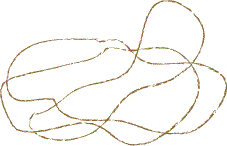Stringy quads
This practical problem challenges you to make quadrilaterals with a loop of string. You'll need some friends to help!
Problem

Try to make one which has exactly one line of symmetry.
Is it possible?
How could you convince someone else that your shape has just one line of symmetry?
Can you make any other quadrilaterals with just one line of symmetry?
Try again, but this time answer the same questions for a quadrilateral with exactly two lines of symmetry.
Try again, but this time answer the same questions for a quadrilateral with exactly three lines of symmetry.
Try again, but this time answer the same questions for a quadrilateral with exactly four lines of symmetry.
Getting Started
Can you each move your hands in some way to show where the line(s) of symmetry are?
How will you try to find other examples? Can you 'tweak' what you have already made? Do you know any quadrilaterals that you might make to test?
Student Solutions
Fiene, who is homeschooled in The Netherlands, sent in the following picture:

This is what Fiene said:
1. quadrilateral 1 symmetry:
Imagine this shape is a cookie. It only has 1 symmetry line because there is only 1 way to break it in 2 so that you get 2 equal halves.
I wonder whether you know the mathematical name for your first shape, Fiene?
2. quadrilateral 2 symmetry:
You have a rhombus, there are two ways to break it so that you have equal halves.
3. quadrilateral 3 symmetry:
This is a trick question! I don't think a quadrilateral with three symmetry lines exists.
4. quadrilateral 4 symmetry:
You have a square, there are four ways to break it in 2 so that you have equal halves.
Will, Hugh, Emil and Ben from Oare Primary School wrote:
1] Firstly, we got a ball of string and rolled it out so we could each hold a corner and we cut it.
2] Next, we thought up a shape with four corners [quadrilateral]. We thought of two, a trapezium and a kite. To persuade people, you draw a kite, and tell people to draw all the lines of symmetry and there should be one.
3] A shape with only two lines of symmetry is an oblong. To prove it only has two lines, you repeat the same method as last time but with two lines of symmetry.
4] It is not possible to have a quadrilateral with three lines of symmetry, because you can't divide 4 by 3.
5] A square is a shape with four lines of symmetry.
Robert, Anezka, Billy, Liam and Zoe from Coldean Primary experimented with lots of different quadrilaterals. They found some shapes with one line of symmetry, some with two and some with no symmetry at all. They also found that there are no quadrilaterals with three lines of symmetry, and that only squares have four lines of symmetry. You can see their very well explained results here. You will also see from that document they tested a hypothesis about the relationship between symmetry and pairs of equal edges.
In answer to how you could prove to someone watching that you have identified all the lines of symmetry, they suggested making the shapes out of paper and folding them in half so that the edges and vertices match up. You could also prove it with a mirror. If you get the person to place a mirror halfway across your shape and gradually rotate it, they will see that the only positions where the reflection allows you to 'see' the whole of the original shape are the lines of symmetry that you have identified.
Thank you for sending in these solutions, they were interesting to read.
Teachers' Resources
Why do this problem?
Possible approach
Ideally, this activity is best done where there is space for pupils to stand up and move, for example in a hall, or a classroom with the furniture pushed to one side, or outside. If this isn't possible, then you could ask children to stand near their tables or lay the string on their tables. Wherever you are, learners will need to be in groups of four (or three).
Key questions
Where are the lines of symmetry?
How could you convince me?
Are there any other quadrilaterals with exactly one/two/three/four line/s of symmetry? How do you know?
Possible extension
Ask children to try and convince you why the result for three lines of symmetry is true. This is by no means easy but listen for explanations which use sound logic and apply relevant properties of quadrilaterals. Learners might pose conjectures which focus on, for example, whether the number of lines of symmetry is linked to the factors of the number of sides of the shape being investigated.
Possible support
Some children may find it useful to research different quadrilaterals to start with and then analyse their characteristics, using the string to test the lines of symmetry. Some might find mini-whiteboards or paper useful for sketching.

